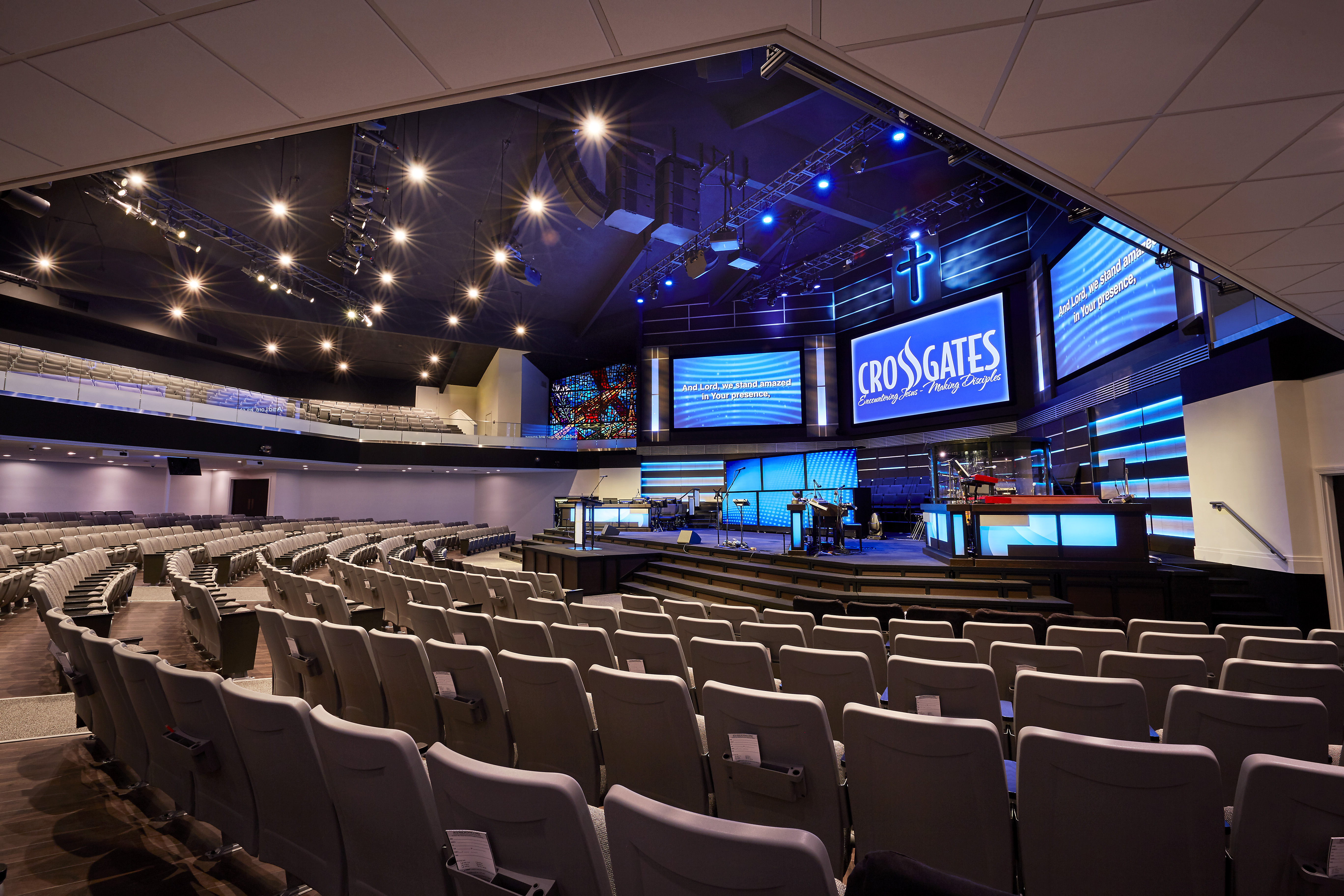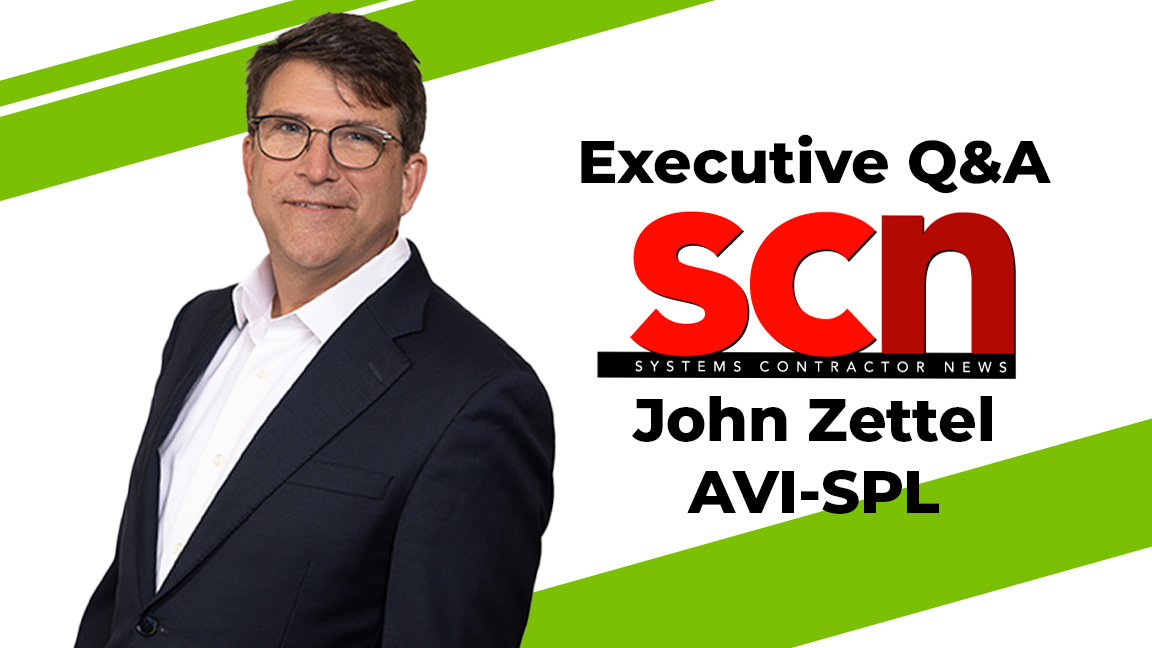How Audio Helps Houses of Worship Regather with Confidence
The new normal has proven to be particularly challenging for church leaders who are tasked with bringing parishioners together across a variety of locations, whether in-person or attending virtually from home.

The global health crisis has introduced a number of challenges as we navigate how to move forward with work, school, and attending services each week. Integrators and system designers are on the front lines, helping to make this transition smooth and successful for their customers. Finding the right solution has proved particularly challenging for church leaders, however, who are tasked with bringing parishioners together across a variety of locations, whether they are worshipping in person or attending virtually from home.
We are in a transitional period in which some sermons are given outdoors, some inside with a limited number of socially distanced people, and an increasing number are delivered online to parishioners attending streaming services. Now more than ever, houses of worship need technology partners with the expertise to guide them toward solutions that are situationally adaptable, while delivering consistent sound quality and reliability.
[The Integration Guide to Houses of Worship]
As regathering increases, church leaders need to maintain a focus on audio quality for those “in attendance,” whether outside the church, inside it, or online. These different scenarios have created unique challenges—and opportunities—for AV professionals, who need to guide church leaders when considering how both spaces and AV equipment will be used differently, helping them to define suitable and flexible solutions. As church leaders figure out how to serve, connect, and inspire their members, it’s key for industry experts to help guide them to create successful online and in-person worship services.
Making an Empty Room Sound Great
With smaller congregations more spread out and rooms at lower occupancy, church leaders need an expert resource to help them understand the impact and their options with respect to the two factors they can control: where sound is directed and what happens to it when it gets there.
As AV professionals, we know that not all room spaces behave the same acoustically—rooms that are wide but not deep need a wide coverage pattern, and ceiling height is also an important factor. Designers and installers can explain how both the space and the objects and materials in the space will alter how sound behaves in it. This can be examined objectively through acoustic modeling tools like EASE, CATT-Acoustic, Odeon, and others that enable integrators to design and install the best solution based on room geometry, worship program material, budget, and other considerations.
Current social distancing guidelines mean that a pre-pandemic 400-seat church could reach capacity at just 75 occupants today. This can be challenging both for church leaders, who are used to seeing full pews, and for those responsible for the church’s audio system. AV professionals can walk through how each room is set up—including its shape, structure, and the materials used—providing context as audio is remapped and specific equipment and acoustical treatments are recommended.
A daily selection of the top stories for AV integrators, resellers and consultants. Sign up below.
Focus on Audio First, Then Video
It is easy for church leaders to become overwhelmed when making the move to streaming weekly services. And while video quality is certainly important, audio delivers significantly more value to congregants who are eager to connect with the spoken word. It may be tempting for churches to stream in the highest resolution possible, but they need to understand this may cause playback issues and degrade the audio quality on the receiving end, so choosing 1080p (over UHD 4K) combined with compression will deliver the service to more individuals—regardless of their bandwidth. Members may be willing to forgive a video stream that is closer to standard definition than high definition, but if the audio is poor, it won’t matter. The service won’t come through and church members won’t be able to experience a true connection to their community
To ensure attendees connect with the messages being shared, worship spaces need to have access to technology that delivers consistent, high-quality audio, regardless of whether it’s a church’s installed sound system or a portable P.A. set up in the church’s parking lot or nearby green space. Integrators who partner with manufacturers who offer a breadth of audio systems across applications gain the confidence of providing a consistent level of quality, ease-of-use and system flexibility regardless of the form factor or location, from portable to installed P.A.s and even wearable devices such as headphones—which are often overlooked. This consistency enables technical teams to make these shifts in worship location and style without having to reinvent the wheel each time.
Delivering a Dynamic Experience
As houses of worship open back up, congregations will expect the audio experience to be clear and consistent, no matter where they worship. Some will be eager for an in-person service, whether in a socially distanced church, a park, or the parking lot outside. Others who can’t be there physically or who are hesitant to attend in the current climate will continue to join from home.
By partnering with manufacturers who offer a variety of audio equipment, integrators can ensure their solutions and advice to houses of worship address a variety of audio challenges in these changing environments, ultimately delivering a dynamic, high-quality sound to their congregations each time. This ultimately puts the system designer and integrator in an ideal partnership position, helping to guide houses of worship as they navigate these transformations while delivering what is needed for each situation.
Adam Shulman is the market category lead for installed sound at Bose Professional. With more than 15 years of experience in system design and product development and a Master of Engineering degree in acoustics, he has a deep understanding of sound and how to achieve quality audio experiences.

